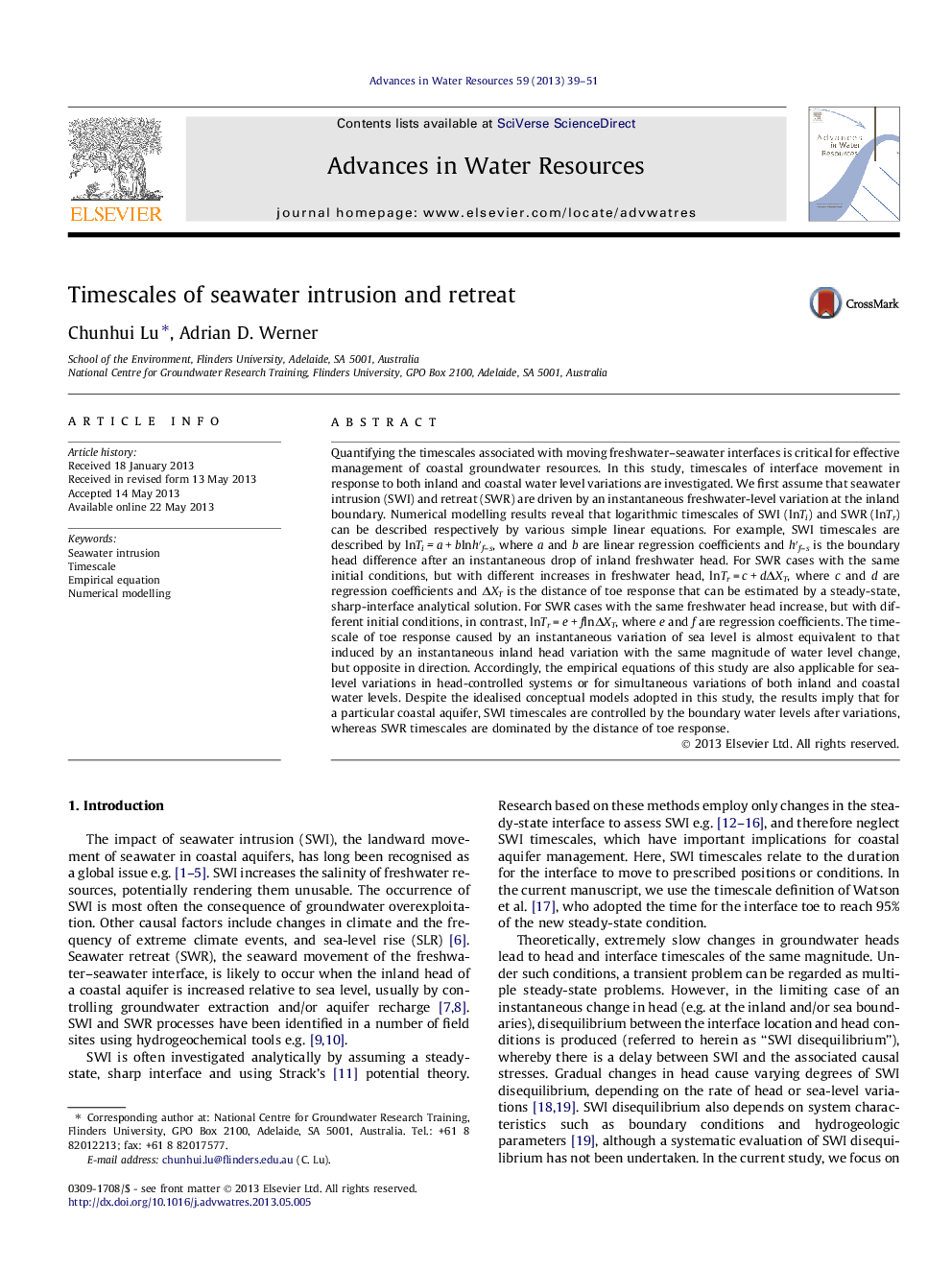| کد مقاله | کد نشریه | سال انتشار | مقاله انگلیسی | نسخه تمام متن |
|---|---|---|---|---|
| 4525679 | 1625649 | 2013 | 13 صفحه PDF | دانلود رایگان |

• Timescales of interface movement in response to both inland and coastal water level variations are investigated.
• Logarithmic timescales of seawater intrusion and retreat can be described respectively by various simple linear equations.
• Seawater intrusion timescales are controlled by the boundary water levels after variations.
• Seawater retreat timescales are dominated by the distance of toe movement.
Quantifying the timescales associated with moving freshwater–seawater interfaces is critical for effective management of coastal groundwater resources. In this study, timescales of interface movement in response to both inland and coastal water level variations are investigated. We first assume that seawater intrusion (SWI) and retreat (SWR) are driven by an instantaneous freshwater-level variation at the inland boundary. Numerical modelling results reveal that logarithmic timescales of SWI (lnTi) and SWR (lnTr) can be described respectively by various simple linear equations. For example, SWI timescales are described by lnTi = a + blnh′f–s, where a and b are linear regression coefficients and h′f–s is the boundary head difference after an instantaneous drop of inland freshwater head. For SWR cases with the same initial conditions, but with different increases in freshwater head, lnTr = c + dΔXT, where c and d are regression coefficients and ΔXT is the distance of toe response that can be estimated by a steady-state, sharp-interface analytical solution. For SWR cases with the same freshwater head increase, but with different initial conditions, in contrast, lnTr = e + flnΔXT, where e and f are regression coefficients. The timescale of toe response caused by an instantaneous variation of sea level is almost equivalent to that induced by an instantaneous inland head variation with the same magnitude of water level change, but opposite in direction. Accordingly, the empirical equations of this study are also applicable for sea-level variations in head-controlled systems or for simultaneous variations of both inland and coastal water levels. Despite the idealised conceptual models adopted in this study, the results imply that for a particular coastal aquifer, SWI timescales are controlled by the boundary water levels after variations, whereas SWR timescales are dominated by the distance of toe response.
Journal: Advances in Water Resources - Volume 59, September 2013, Pages 39–51